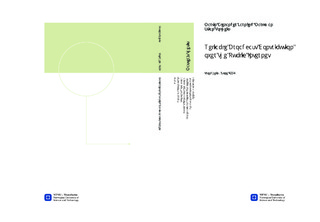| dc.description.abstract | Broadcast contribution is point-point media transfer from recording sites to local editing studios, between studio facilities and to distribution centers. The contribution phase has strict Quality of Service (QoS) requirements to reliability and bandwidth - any error might degrade end users Quality of Experience (QoE) in the consecutive distribution phase. Dedicated IP contribution networks has become the preferred technology for contribution from content creation sites. Occasionally, however, contribution happens at a site without access to a dedicated IP contribution network - in which case the broadcaster must utilize less optimal technologies. Based on IP, the public Internet may be a superior solution in some scenarios due to high bandwidth and geographical coverage - if the internet can conform to strict contribution requirements to QoS and QoE. This thesis attempts to give a clear answer to this question. Our investigation was done in three parts. First, we uncovered recent Internet QoS trends in Norway. We found that the internet has become an Internet video delivery platform, which in turn has resulted in bandwidth increase in access networks. Bandwidth in residential access links now conforms to contribution requirements. ISPs make profit according to the level of offered QoS, broadcasters can therefore expect high QoS. Also, broadcasters can buy QoS guarantees, which may be a viable and safe solution. Secondly, we recorded over 21 hours of Internet QoS statistics on a connection traversing 11 routers and one peering point. The measured level of every QoS metric (packet loss, jitter and re-ordering) conformed to professional contribution network requirements, except the rate of packet loss bursts. However, no burst above 200 ms was recorded and no two consecutive bursts happened within a 2 second time frame. Based on this, we explained how simple error control strategies can correct or mask packet loss burst with a 200-250 ms delay tradeoff and 15-30% bandwidth overhead. Third, we did subjective tests in the Internet with two professional JPEG2000 contribution gateways delivered by T-Vips. A full movie was encoded at 70 Mbit/s, a bitrate used for very high quality contribution, and shown to a test panel of 24 participants. By analyzing questionnaires, we proved that contribution over the internet yield equally good QoE as cable TV. Also, we found that noticeable degradations due to packet loss happened once per hour on average. Furthermore, packet loss bursts below 4 ms was generally not visible to the viewers. Because the Internet provides both the required QoS and QoE, we concluded that broadcasters can do contribution over the Internet at the required level of quality whenever this is a favorable option. | nb_NO |

